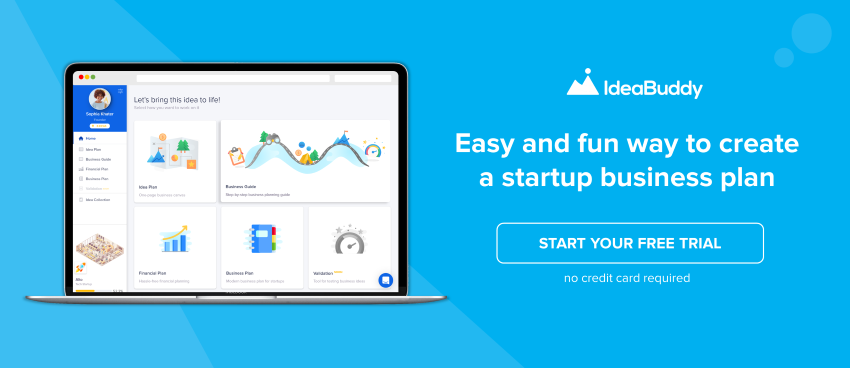Understanding the edge and shortcomings of your business idea helps build a sustainable venture. This means you should be assessing your business on an ongoing basis, identifying what works and what can work better.
And a ‘staple’ business tool for this is the SWOT analysis. It’s a simple and efficient way to take the pulse of your business at any growth stage.
So today we look at how to carry out a SWOT analysis and ask yourself the right questions to have a reliable roadmap to then take your business to the next level.
By the end of the blog, you will know:
- Which strengths your business have and how to use them
- Which weaknesses prevent your business from excelling?
- Where the window of opportunities lies and how to use it
- What are some threats that jeopardize your business’s success?
What is a SWOT analysis?
SWOT stands for Strengths, Weaknesses, Opportunities, and Threats.
Therefore, the SWOT analysis takes into account both internal and external factors.
Strengths and weaknesses refer to aspects innate to your organization. This is something you have control over.
On the other hand, opportunities and threats factor in your competitors, market trends, and other constraints.
As a result, SWOT analysis helps you analyze your company in the broad context in which it operates, while also identifying how internal dynamics can be improved.
SWOT Analysis: Strengths
The “Strengths” quadrant of your SWOT analysis helps you explore the strengths of your business in greater detail.
You can start by answering the following questions:
- Do you have any unique resources that competitors might lack?
- What do you think is something that you do well?
- What do customers say they like about your product/service?
So, to make the most out of your Strengths analysis, do several rounds of these questions and answers. Each time, you will be able to pinpoint more specific strengths. Some of them you might have missed before.
Then, in the next iteration, you could look at SDRs, customer support and pricing models, and examine which segments, in particular, give you the edge over competitors. This will also serve as the basis for the Opportunities section. There, you can include those Strengths as areas where you can still make more improvements.
SWOT Analysis: Weaknesses
The goal of the “Weaknesses” quadrant is to help you discover those areas within your organization where you could do better. So think about people, processes, resources, tools and systems, and all other parts that you have control over.
Start by answering the following questions:
- Is there anything you could improve?
- What expertise do you, as an organization lack?
- What complaints do your customers most often voice?
- How well-spread is your customer base, i.e. do you depend on a single client?
- Is there a clear line of responsibility? Are processes optimal from end to end?
SWOT Analysis: Opportunities
The “Opportunities” box is part of the SWOT analysis where you start to look outside the company, towards market trends, prospects, and customers’ habits, external factors in the global market, and ultimately for the new space that’s not yet populated (similar to the Blue Ocean strategy).
The “Opportunities” quadrant should be analyzed on its own. But it can yield greater results if you combine it with the outcome of your “Strengths” analysis.
Here, you and your team should answer the following questions:
- Is there a need within the industry you could be meeting, and no one is?
- What trends could you become part of?
- How could you turn your strengths into opportunities?
- What is it that our competitors are not offering to their existing customers that we could?
SWOT Analysis: Threats
The “Threats” quadrant in the SWOT analysis helps your business stay prepared for potential adverse factors coming from the business environment. That includes anything from supply chain management to new competitors in the market, new regulations, or market demands.
Here, you want to anticipate any potential blockers that might jeopardize your growth. And you want to be able to prepare for action well in advance.
Start by answering these questions:
- Is there an indirect competitor who could soon expand into your primary area of business?
- Are your suppliers prepared for sudden shortages of raw materials?
- Is the security of your digital resources good enough, or could you be hacked?
- Are competitors expanding, or is the target market shrinking?
SWOT Analysis: The final result
We have also prepared an example of the SWOT analysis for the tech startup so you can see the end result, which might look something like this:
Tech Startup – SWOT Analysis
| Strengths
Sales team — 3 SDRs who worked in the industry for years, and in the same market, have numerous contacts in the area. Our customer support is available around the clock — the only support with availability among top competitors. The various pricing models — especially the ease of switching from one model to another, without losing data/previously created records. |
Weaknesses
Lack of consistent brand — too much experimenting; customers have difficulties recognizing the brand. Two major clients bring 70% of revenue. No clear processes between marketing and sales — double work on identifying and qualifying leads — prospects often spammed. |
| Opportunities
Optimize our video content and expand into that marketing channel as well. Build our own platform to host resources and build a community. Strategically organize our support to ensure the most bandwidth for top markets. |
Threats
Our competitors offer an omnichannel experience. Use of deprecated technology for some parts of our services — potential danger for data theft and unavailability of services during peak hours. Customers transitioning to new types of bundled services and platforms. |
What after the SWOT analysis?
Now that you have filled out all four quadrants of the SWOT analysis, it’s time to build your strategy. Depending on the depth of potential issues and the urgency of reacting to threats/opportunities, you might want to start dealing with low-hanging fruit first. So start solving those problems that are essential and business-critical, while at the same time cashing in on your strengths.
What you should do after completing the SWOT analysis, is incorporate all the findings from the four quadrants into your business plan and/or business value canvas. In turn, you will have a more accurate foundation on which you can build your business strategy so that it utilizes your existing resources and helps you deliver real value to your target audience.
Ready to create your SWOT analysis for free? Try Idea Buddy’s step-by-step guide and build a venture that lasts.
After you read how to do the SWOT analysis, you might also like:




